Last fall we wrote about NanoBeam, a new super-miniature open source aluminum T-slot profile construction set that was on Kickstarter at the time. While comparable in design to industrial profile systems like 80/20, its cross section of just 5 mm × 5 mm is comparable to a stud on a lego brick.
We recently got our tweezers hands on a ‘beam, and yes, it’s real, yes, it works, and yes, it’s that tiny. And just wait until you see the fasteners.
Nanobeam joins some excellent, slightly larger company in miniature open source extrusions. MakerBeam, shown at center and twice as tall, is a 10 × 10 mm system that we reviewed last year. OpenBeam is larger yet at 15 × 15 mm. This is a good thing: Having a wider range of sizes available can make the difference between being able to use one of these systems and not being able to.
Despite being so small, the side gap on NanoBeam is just over 1/16″ (1.6 mm), which allows it to fit a standard circuit board. One might start to think about making awfully small robots out of this frame. The ability to mount electronics is a plus.
[ Bonus 555 for scale. Or is that actually a large extrusion with a really big 555? ]
Our sample kit came with a single piece of NanoBeam one foot light-nanosecond in length, along with a small screwdriver, tiny mounting brackets, tinier yet nuts, and even tinier screws. Lego brick for scale on the left hand side.
For a first project, we made a business card holder. And to do so, we would have to cut the beam.
Larger extrusions are normally cut with a simple bandsaw or a hacksaw. However these tiny profiles are potentially more delicate, and might benefit from a more gentle touch. We ended up using an abrasive cutoff wheel to cut the pieces. For the future, a scroll saw or fine blade on a bandsaw would likely be cleaner and faster.
After cutting, we used the disk sander to achieve a clean, square surface on the cut ends, and to fine-tune the length as needed.
“Ah, that’s better!”
The astronaut twins are from our original collection of Lego Abominations.
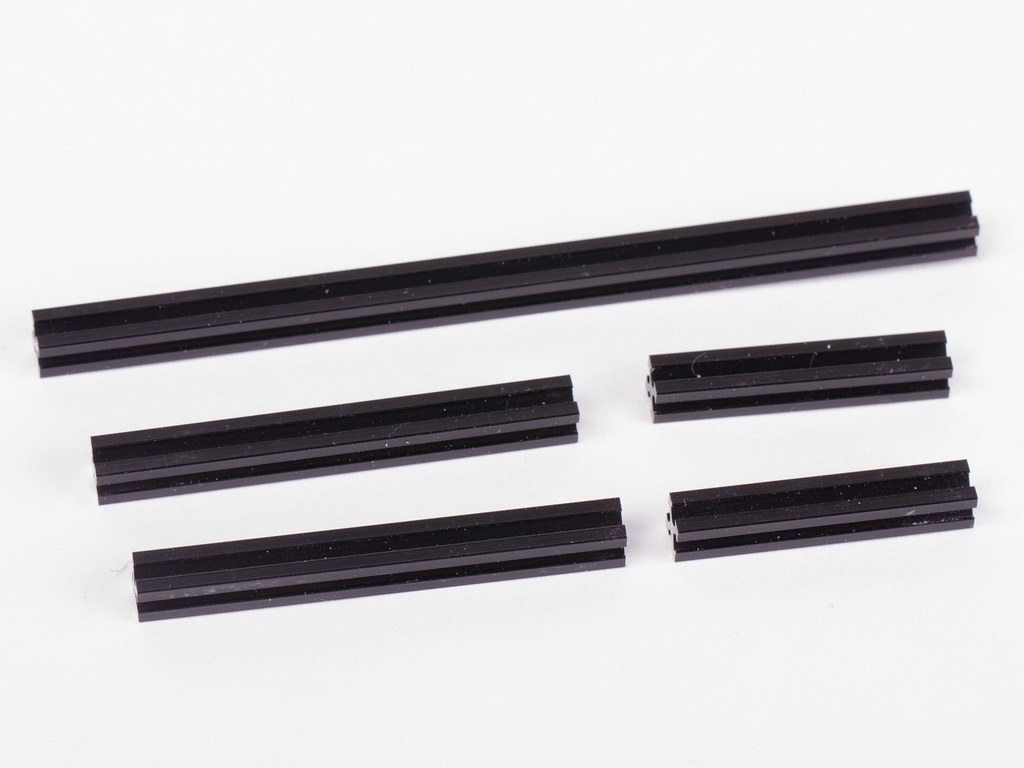
For the business card holder, we need five lengths of beam: 3.8″ (one piece), 1.95″ (two pieces), 1.2″ (two pieces)
The fastening system is well designed and built with pleasing tolerances. Special oblong nuts — stamped and tapped — slide into the ends of the beam, but generally stay put thanks to friction. The corner brackets that fit the screws could use a little more polishing, but have remarkably little slop.
It is straightforward to see how all the parts fit together, but it is a little tricky to handle those tiny screws and get them into place.
And just for perspective: Tweezers are nearly essential to be able to pick up the tiny M1.2×2 screws and put them where they need to go.
And here is the completed business card holder, holding one of our business-card sized AVR target boards. The overall assembly is remarkably sturdy, especially since that we’ve only added brackets on one side.
NanoBeam is now available from nanobeam.us. All considered, this seems like a neat and plausible new platform for making tiny robots and structures. We’ll be following it with interest.




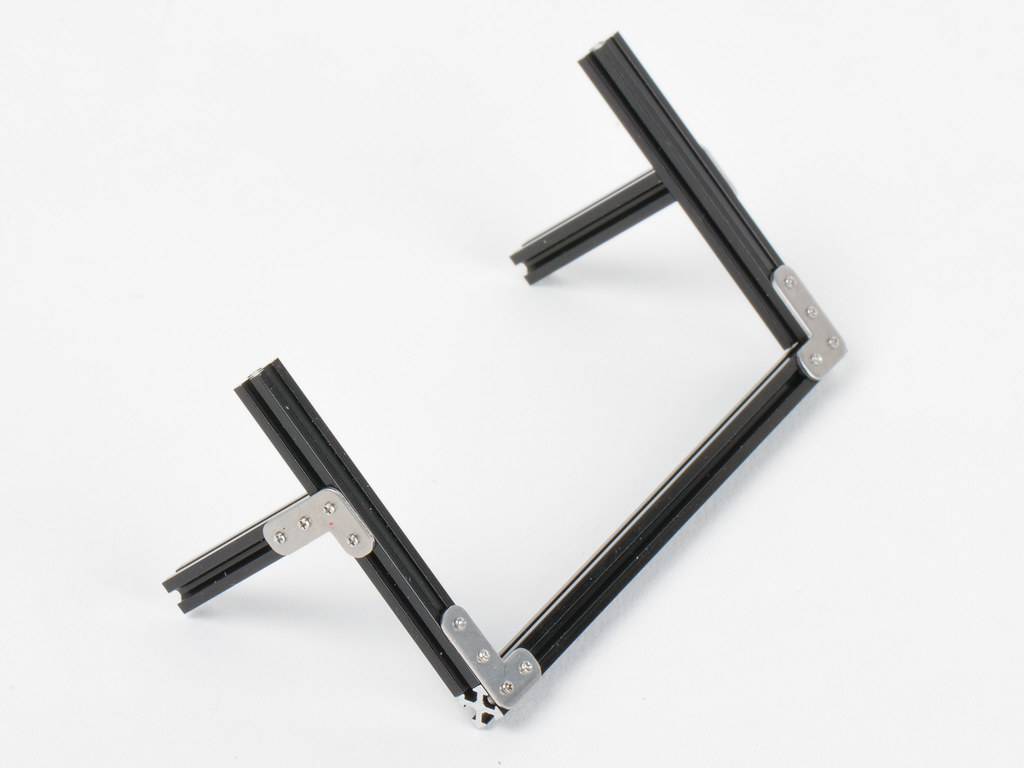
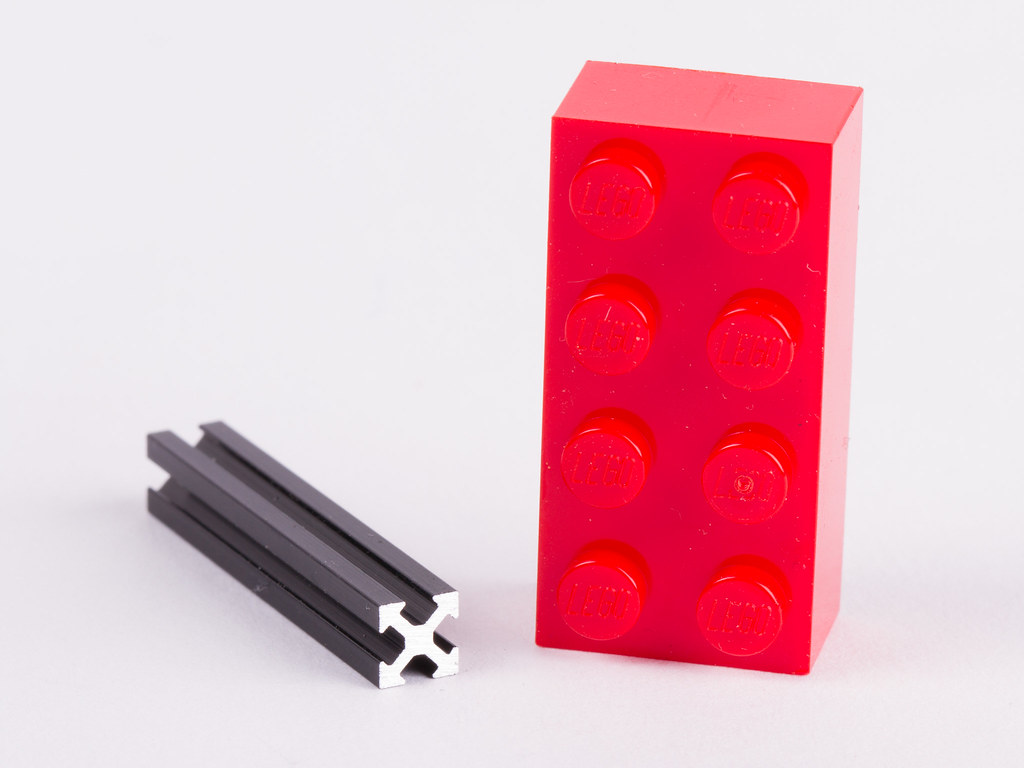
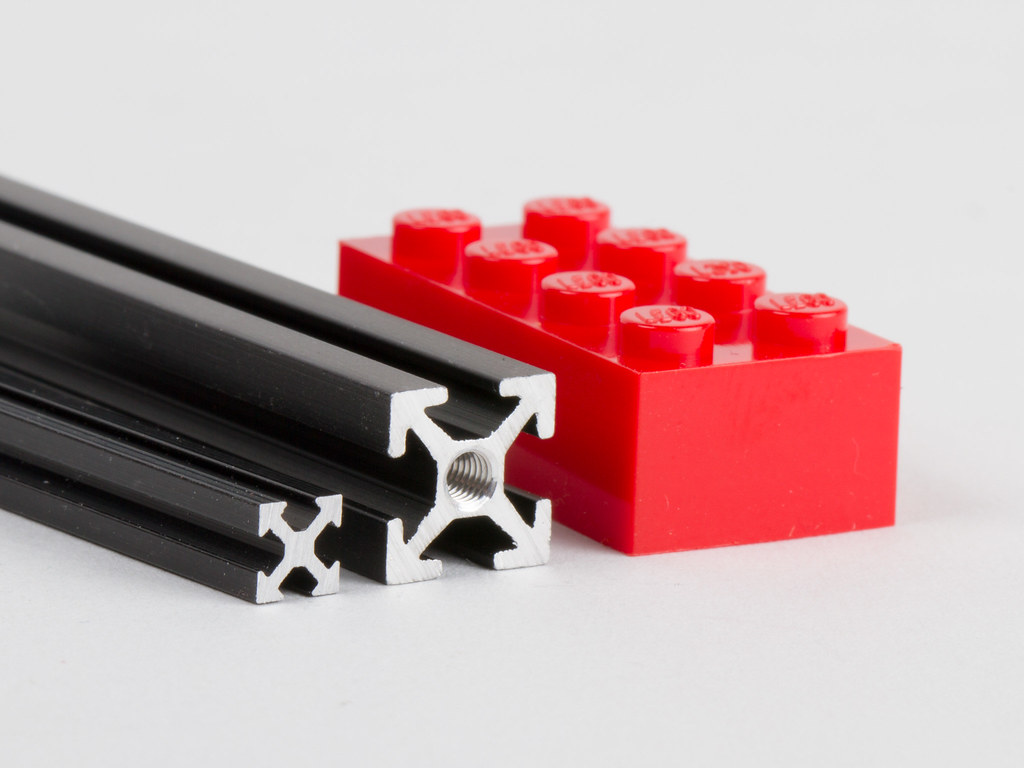
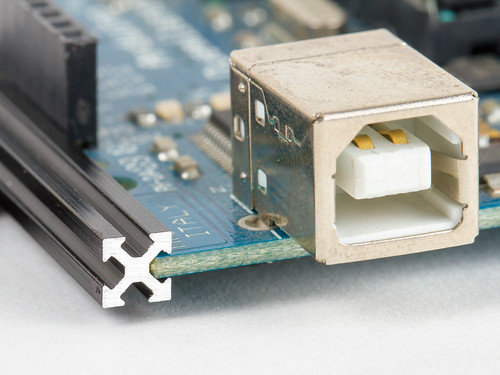
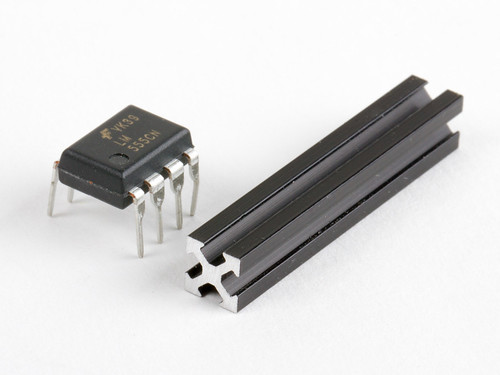
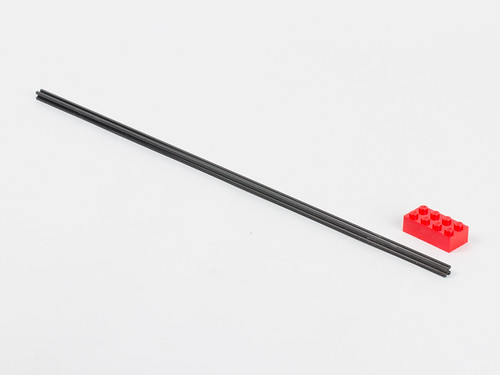
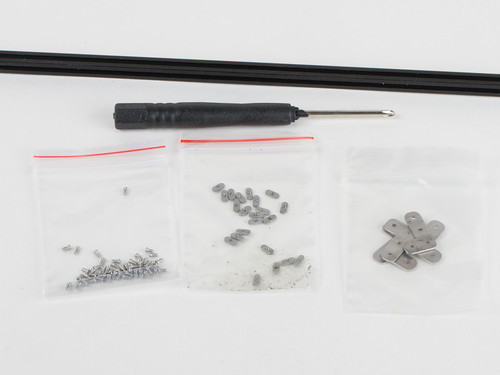

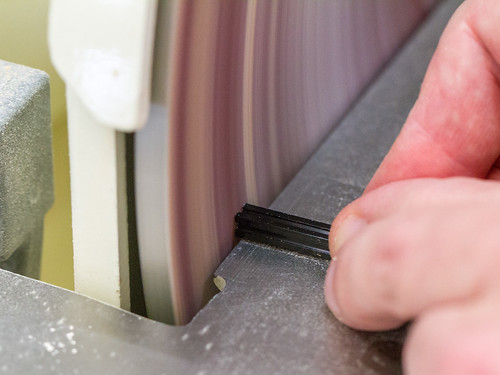

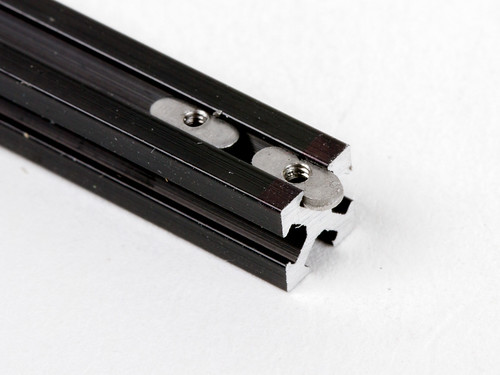
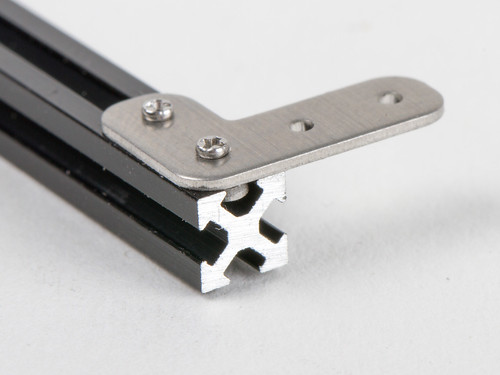
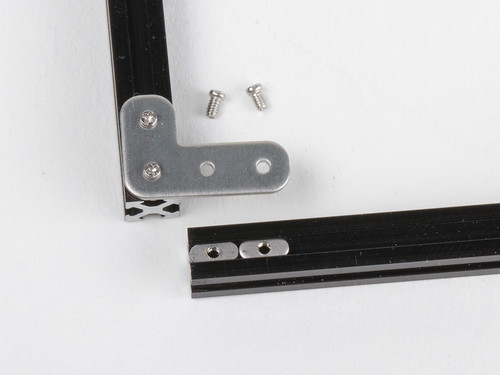
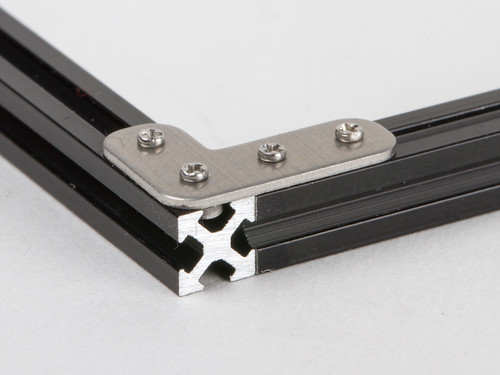
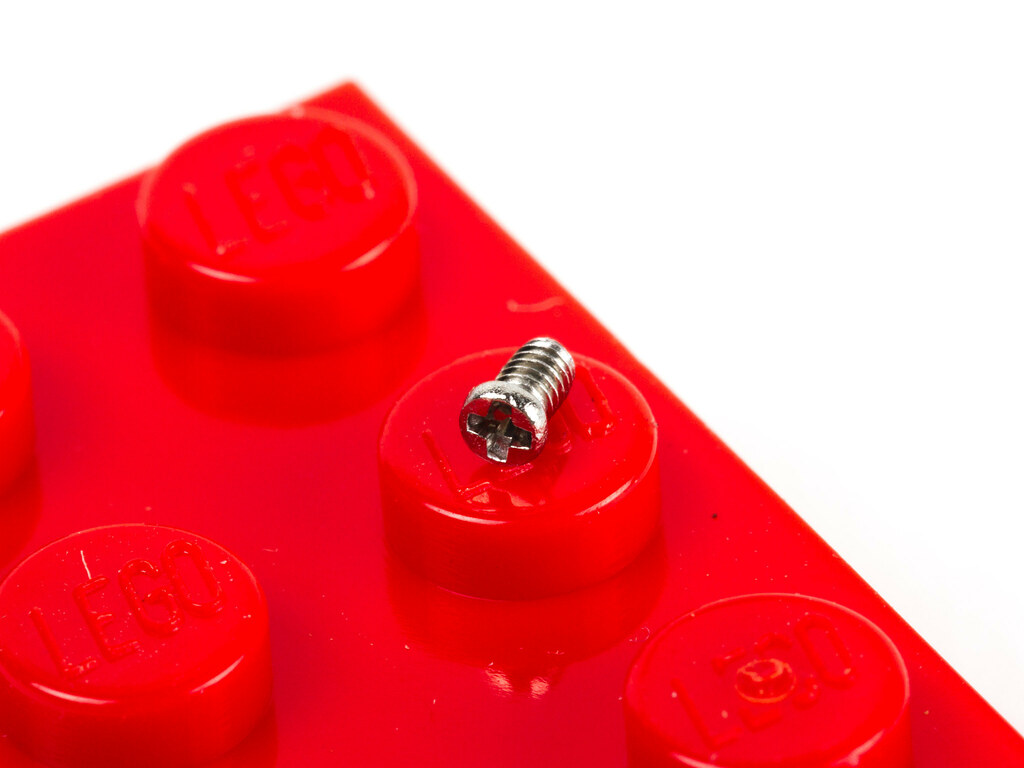

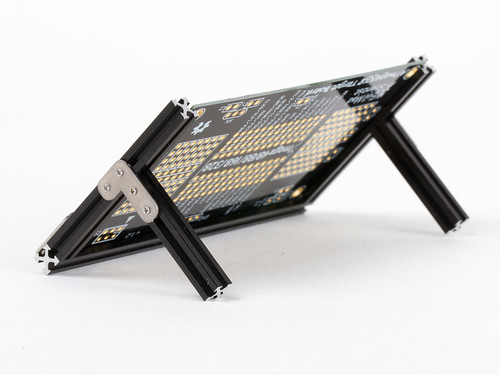
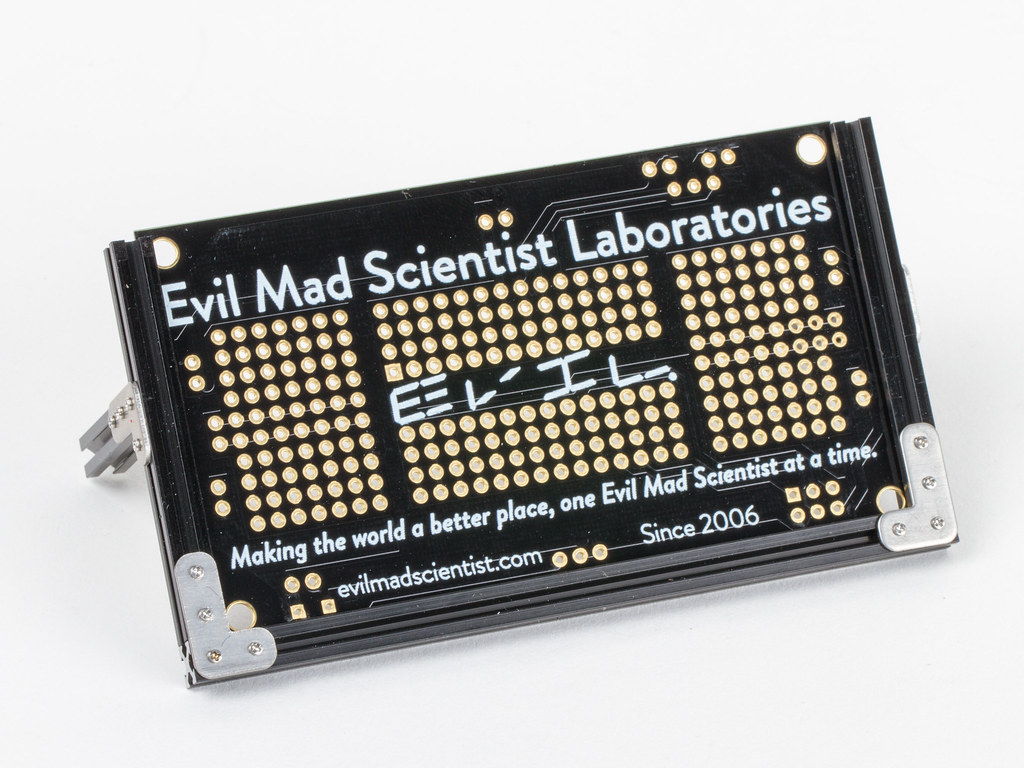
Oh wow! This stuff looks really useful! Is it strong? It looks perfect for making a tiny custom multiroter! It only weighs about 3g/100mm, if I’m estimating correctly! And it seems relatively cheap, also! I think I am sold. Thanks
Yes, it’s surprisingly strong, and would likely work well for little drones. I did not weigh it, but would estimate 4-5g for a 10 cm piece.
I bought in during the kickstarter.
I had not considered using the nanobeam as a board holding frame.
That is a very good use of the stuff.
Naraic, making a microrouter would be rather cool, though I am not sure where you are going to get things like the mill head in a small enough size.